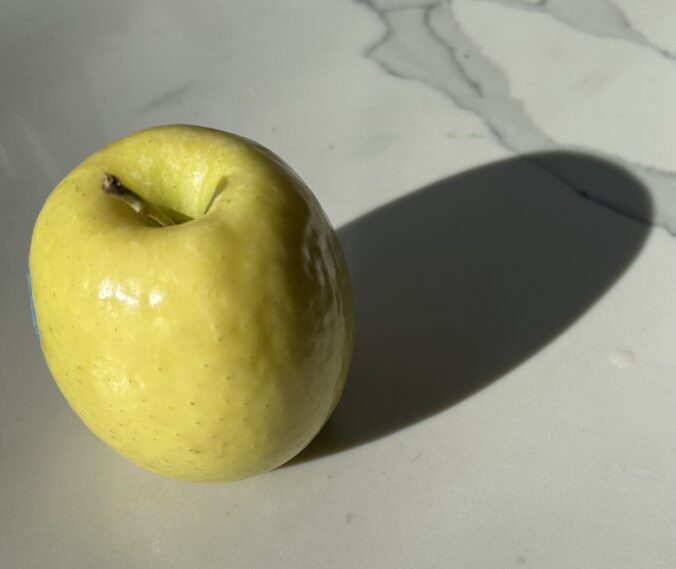With all due respect to Pete Seger, for the past couple of decades I have been asking myself, “Where have all the Golden Delicious Gone?”
My earliest apple fixation was with the Golden Delicious apple cultivar. Its taste profile just resonated with me. It was not too hard. It was not too soft. It was not too sweet. It was not too tart. Its skin was not too thin. Its skin was not too thick. For me, it was damn near perfect.
I ate them throughout the 60s, 70s, 80s and most of the 90s. They were easy to find at the market with their distinctive yellow skin. At some point, they started getting to the market while they still had green skin, a sign that they were picked before they were ripe and then stored. No matter how long I let the green ones sit at home, they never ripened into a yellow color and they never tasted right. Needless to say, I was not fixated on eating them. I did not like them at all, and I had a hard time finding any other apple cultivar that I did like.
It is sort of odd that I couldn’t find an apple to eat. There are over 7,500 cultivars of apples, with about 90 or so in commercial production, meaning that there was a high probability that I would find one I liked. Sadly, until recently, I never could. In fact, I just skipped eating apples altogether, unless I ate some Granny Smiths I had put into an apple pie.
I used to listen with envy as Pam and Kimberly discussed apples. What they liked. What they didn’t. I don’t remember if Shelby contributed to the conversations because all I remember about Shelby eating apples is her spitting out a mouthful of apple as she exclaimed, “Ugh, that sucks!” I could never contribute except to complain about the lack of yellow Golden Delicious apples in the store.
To some extent, the Golden Delicious cultivar was a freak of nature. It was found in the 1890s in the eastern US as a chance seedling of either a Grimes Golden or a Golden Reinette cultivar. It was wildly popular in the early 1900s and maintained its popularity for decades. It is still one of the top 15 apple cultivars in production. It just does not get to the market in a state I will eat.
Many other apple cultivars are based on the Golden Delicious, including the Jonagold, Gala, Mutsu, Pink Lady, and Ambrosia, Opal apples, to name a few. It shocks me that I do not really enjoy any of these varieties. But I just don’t.
One day last year while I was at the market during apple season, I happened to spot a yellow apple. I always look at the yellow apples, hoping against hope that they are Golden Delicious. Generally, the yellow ones I see are the dreaded Opal apples. To me, Opals are just a tease. With their mellow yellow coloring they look like I will like to eat them but their texture and taste are off-putting to me. On that day as a looked at the yellow apples on display and read the sign, I noted it did not say Opal. Instead, it read Lemonade, a variety I had never seen before. Smiling broadly, I bought some.
It’s a good thing I did because they come closer to meeting my Golden Delicious apple expectations than any other cultivar I have ever tried. I really enjoyed them.
It turns out that, unsurprisingly, Lemonades are descendants of Golden Delicious apples. They were cultivated by crossing a Royal Gala and a Braeburn cultivar. Braeburns were created by crossing a Granny Smith and a Lady Hamilton cultivar. The Royal Gala was created by crossing a Kidd’s Orange Red and a Golden Delicious cultivar.
The Lemonade was first cultivated in New Zealand in the early 2000s. As far as I can tell, it first made its way to the States last year when I saw them. As far as I am concerned, it was about time they got here, and I salute the company that is importing them.
So, I am back to eating apples. They are still Golden Delicious, sort of. They just have a weird name.
